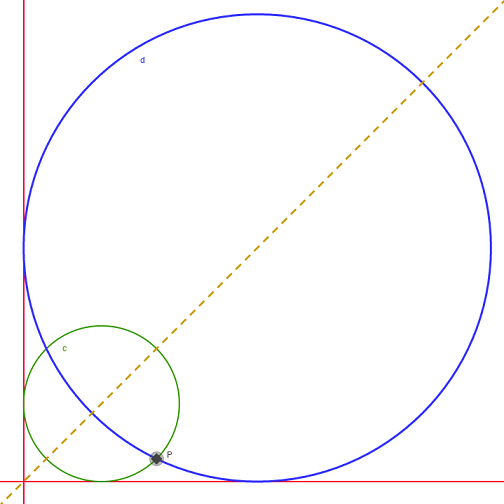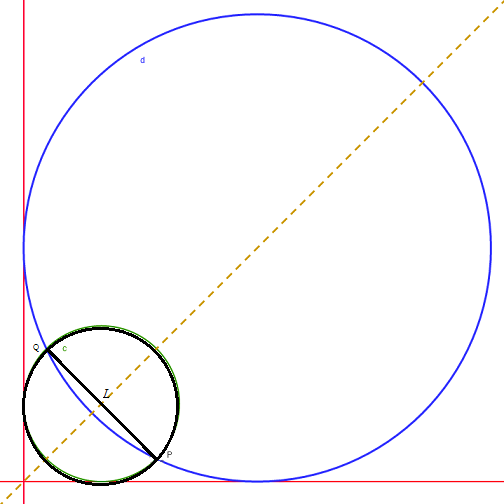P(a, b) is a point in the first quadrant. Circles are drawn through P touching the coordinate axes, such that the length of common chord of these circles is maximum, find the ratio a : b?
while solving the question, i realized that there will always be two such circles that can be drawn through P and satisfying the above criterion, with radius:
r1 = a+b+(2ab)^0.5 and r2 = a+b-(2ab)^0.5
the length of the common chord then turned out to be something like
L = root2*modulus(a-b)
if the question were to minimize this length, a : b would have easily been 1. but for maximising, woudn't the answer be infinity?
while solving the question, i realized that there will always be two such circles that can be drawn through P and satisfying the above criterion, with radius:
r1 = a+b+(2ab)^0.5 and r2 = a+b-(2ab)^0.5
the length of the common chord then turned out to be something like
L = root2*modulus(a-b)
if the question were to minimize this length, a : b would have easily been 1. but for maximising, woudn't the answer be infinity?
1 Answer
Explanation:
In order for a circle to be touching both coordinate axes in the first quadrant, it must have its center located on the line

The common chord is going to be
In order for the common chord to be the maximised, it has to be the diameter of the circle where

In our particular example, it almost overlaid one of the original circles.
Anyway, the center of this new circle is the midpoint of
The equation of the circle is:
The lenght of
After some arithmetic, we reach the equation
The circle with diameter
If we substitute the coordinates of one of these points (doesn't matter which; it gives us the same answer) into the circle equation we get the condition
Divide both sides by
This is a quadratic equation with the indeterminate the ratio of
The solutions of this equation are
These are the ratios we desire.

